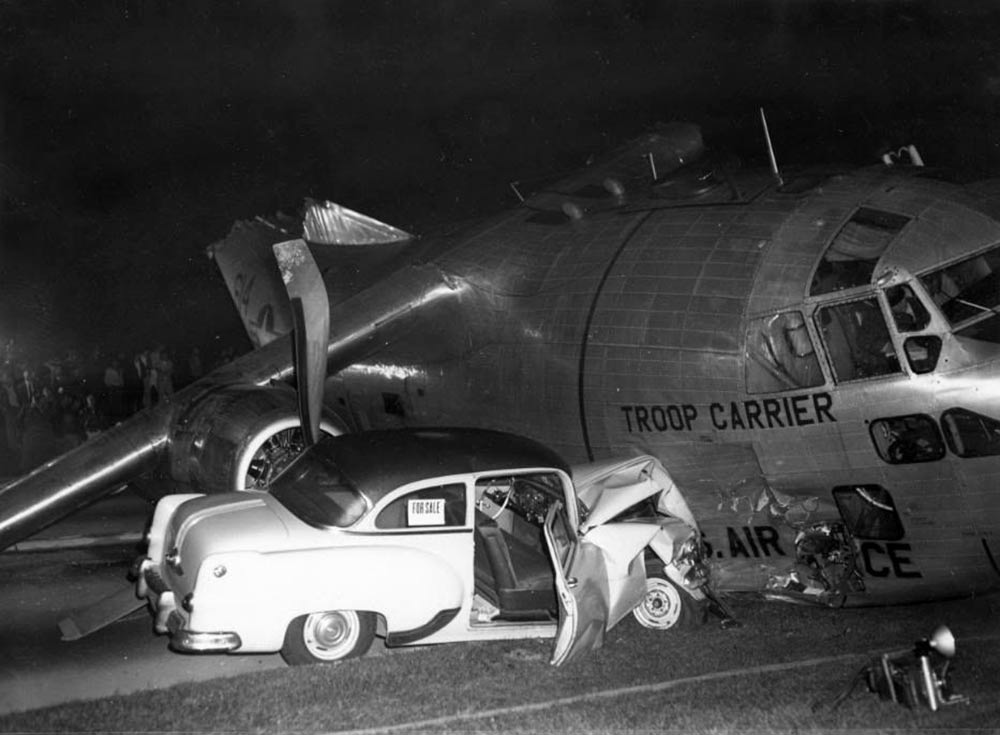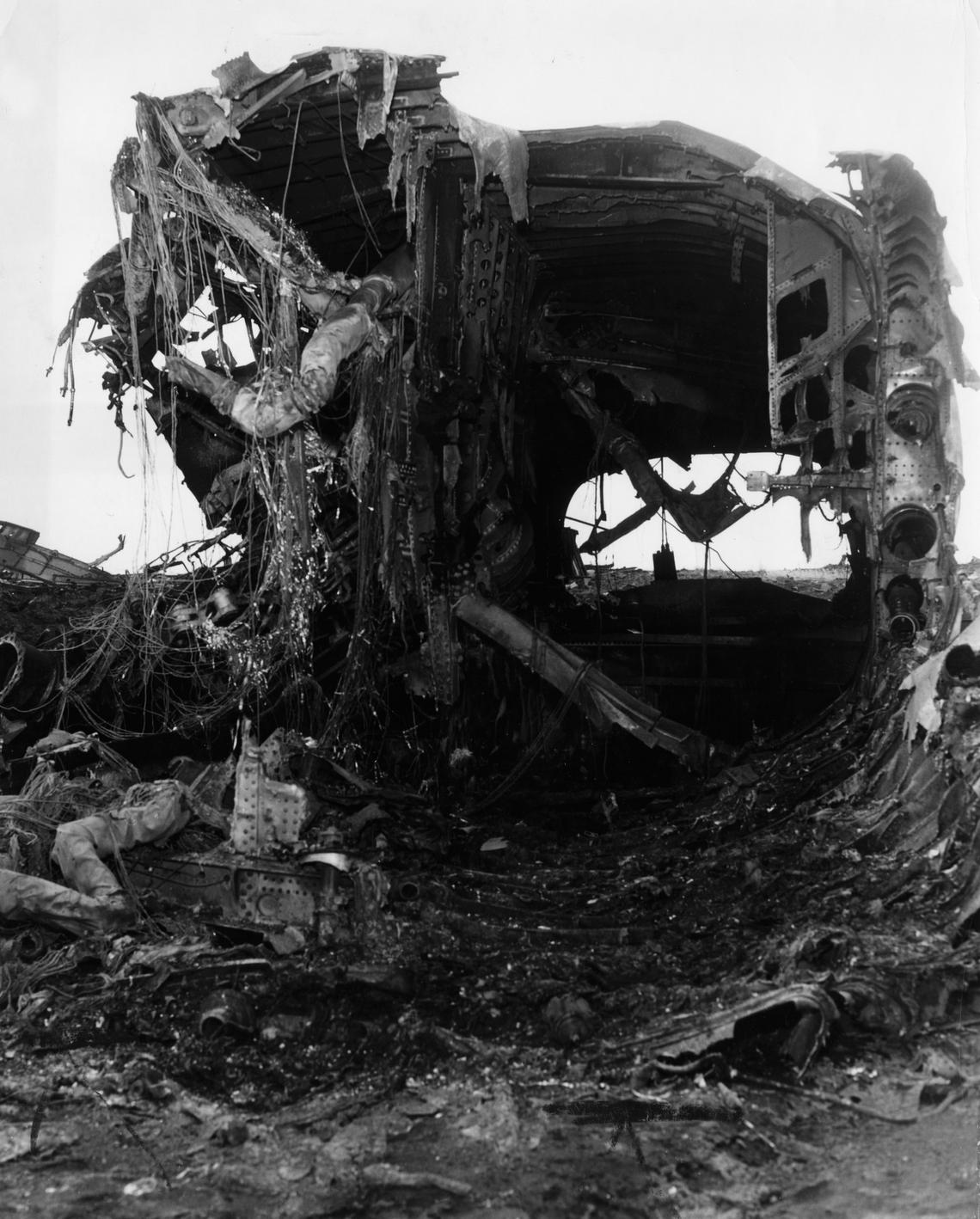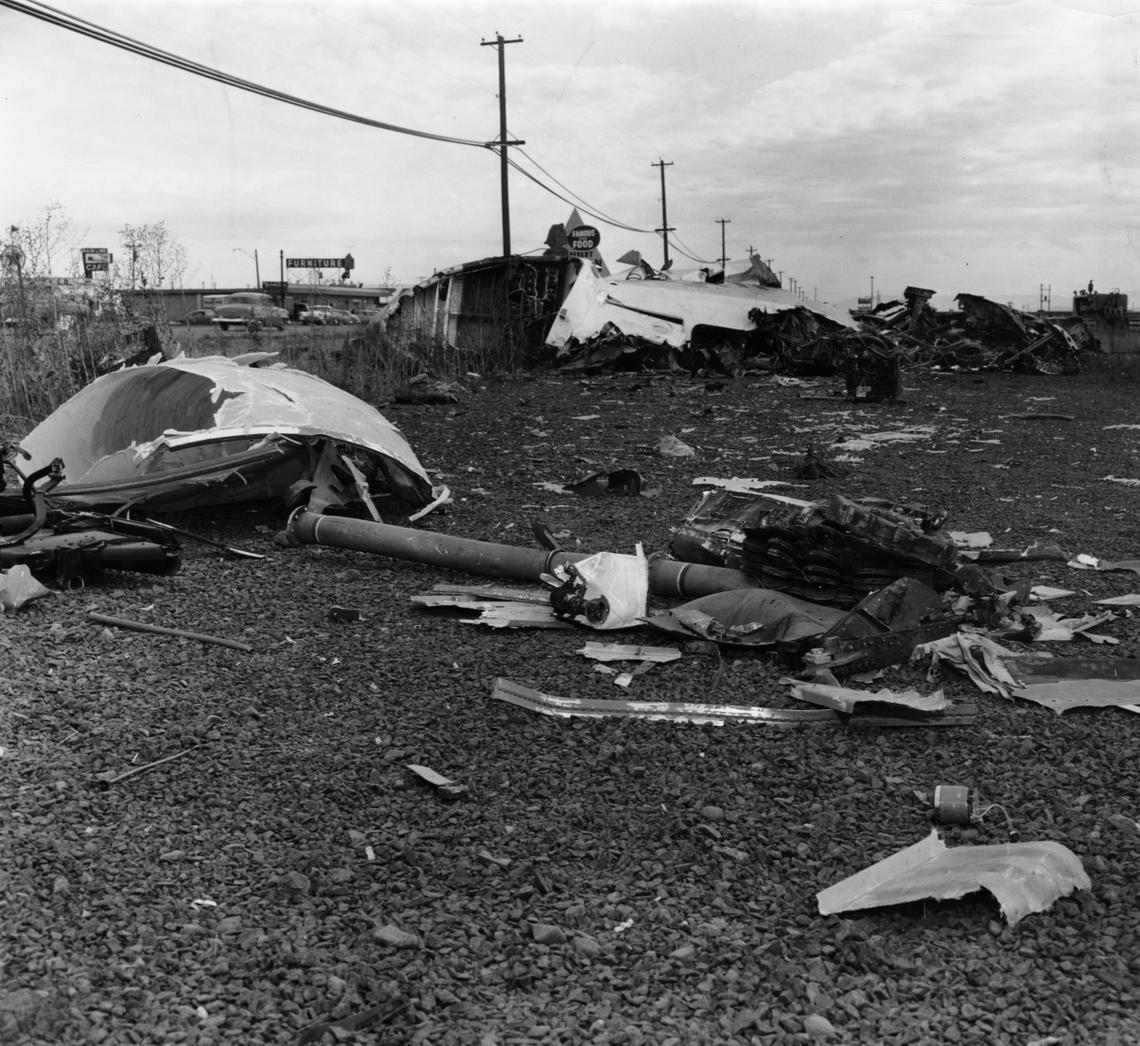Crash of a Curtiss C-46A-45-CU Commando in Buenos Aires
Date & Time:
Nov 11, 1958 at 1115 LT
Registration:
LV-FTP
Survivors:
Yes
Schedule:
Buenos Aires - Buenos Aires
MSN:
30356
YOM:
1944
Crew on board:
4
Crew fatalities:
Pax on board:
0
Pax fatalities:
Other fatalities:
Total fatalities:
0
Circumstances:
During the takeoff roll, prior to V1 speed, the left engine failed. The crew decided to shut down the engine and to feather the propeller when the airplane overran, struck obstacles and crashed in flames. All four crew members were evacuated safely while the aircraft was destroyed by fire.
Probable cause:
The cause of the failure on the left engine could not be determined. However, the instructor was blamed to perform a training mission which such aircraft at Ezeiza Airport as the runway was considered as too short for this kind of mission. Thus, when the engine failed, the available distance was insufficient.













